I haven't taken a lot of pictures of my room but I thought I'd share what I have :)
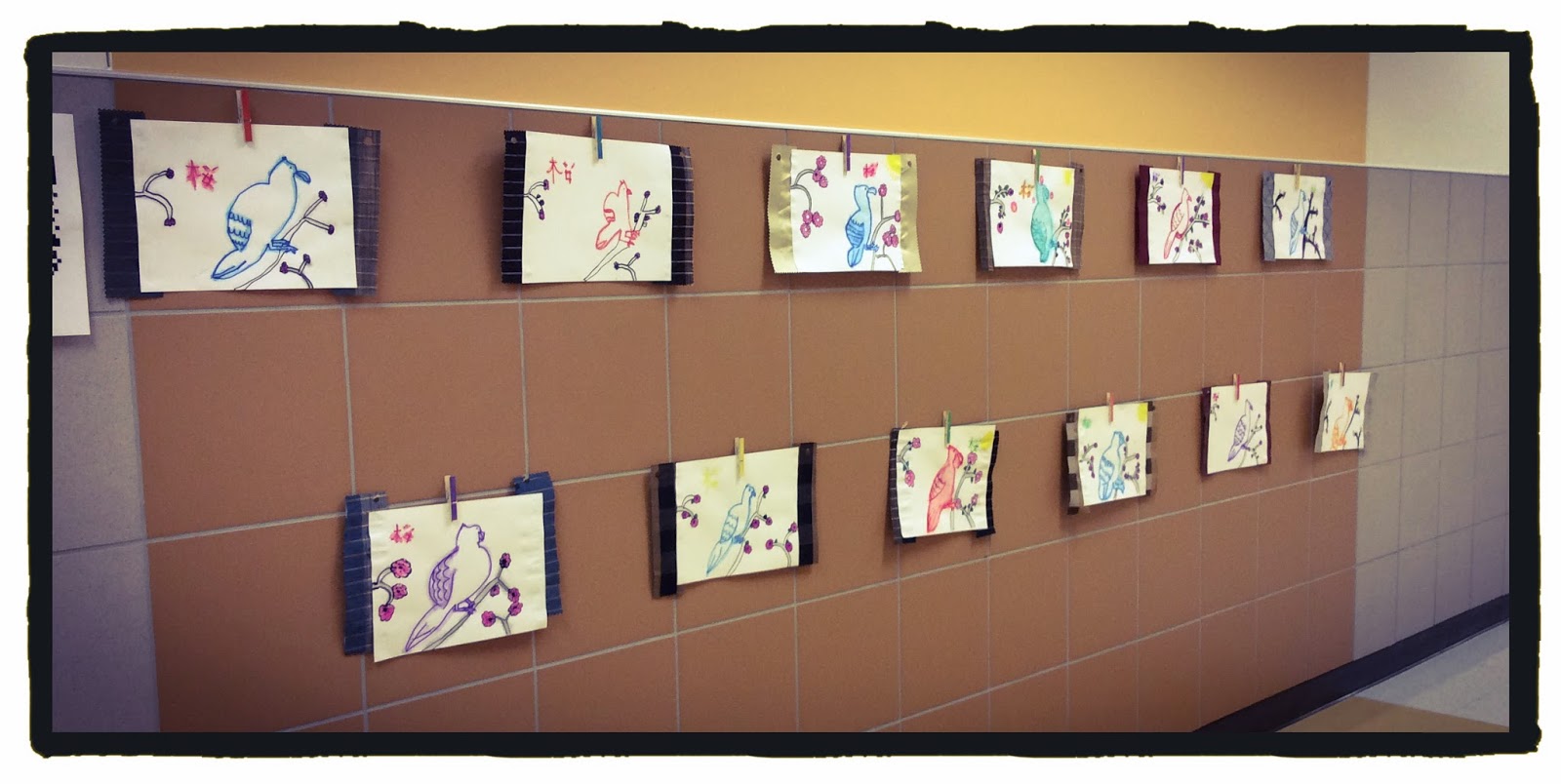 |
| Outside display |
These are the works outside my room right now. The building is new and we want to keep it nice, so we are not allowed to staple things on the walls. I don't have a display board outside so I improvised by buying command hanging strips and using wooden clothespins I already had.
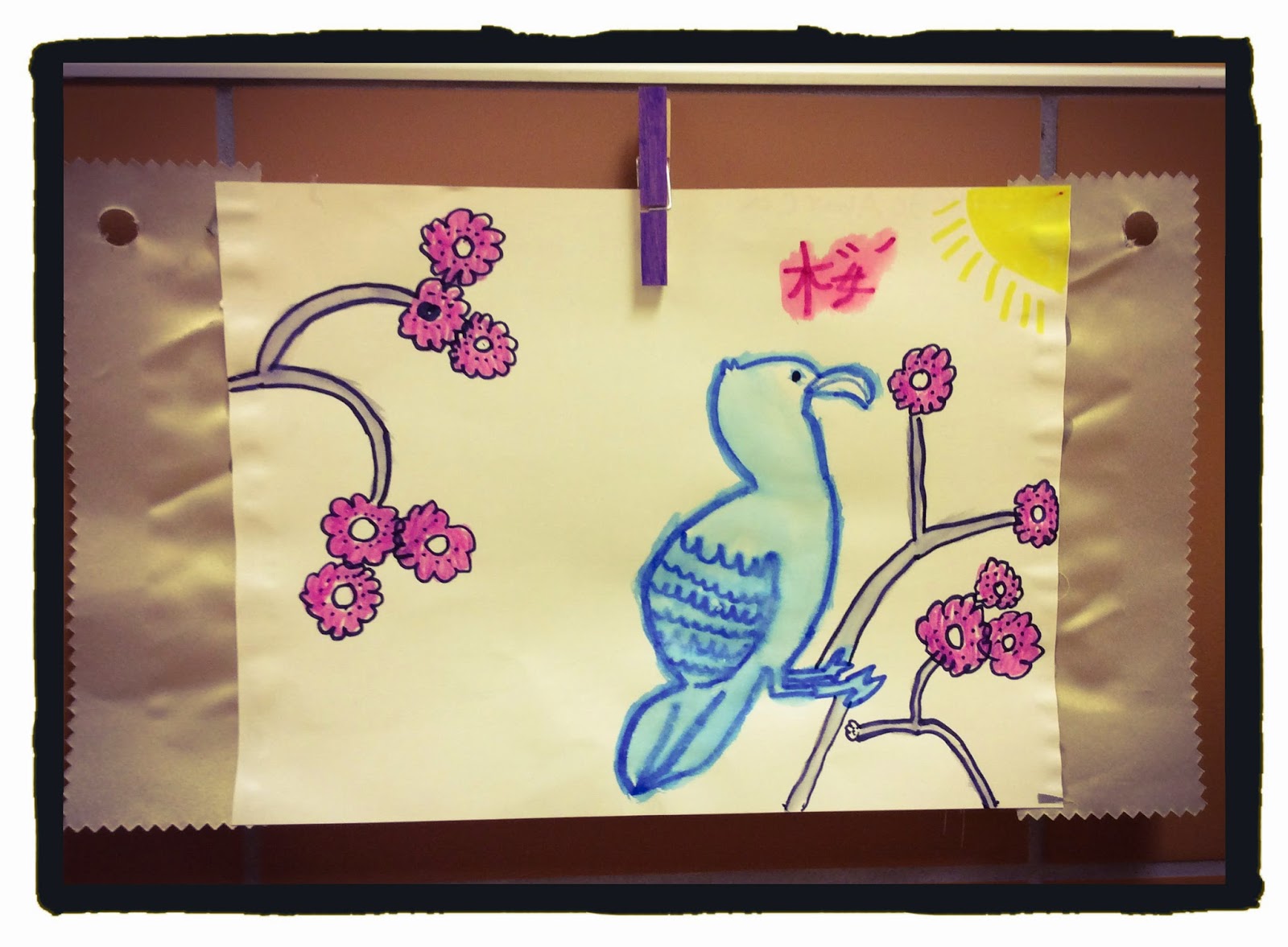 |
Kakejiku inspired work
|
Last year I painted the clothespins with tempera paints, this year I just attached the command strips to the back and they have been holding on so far.
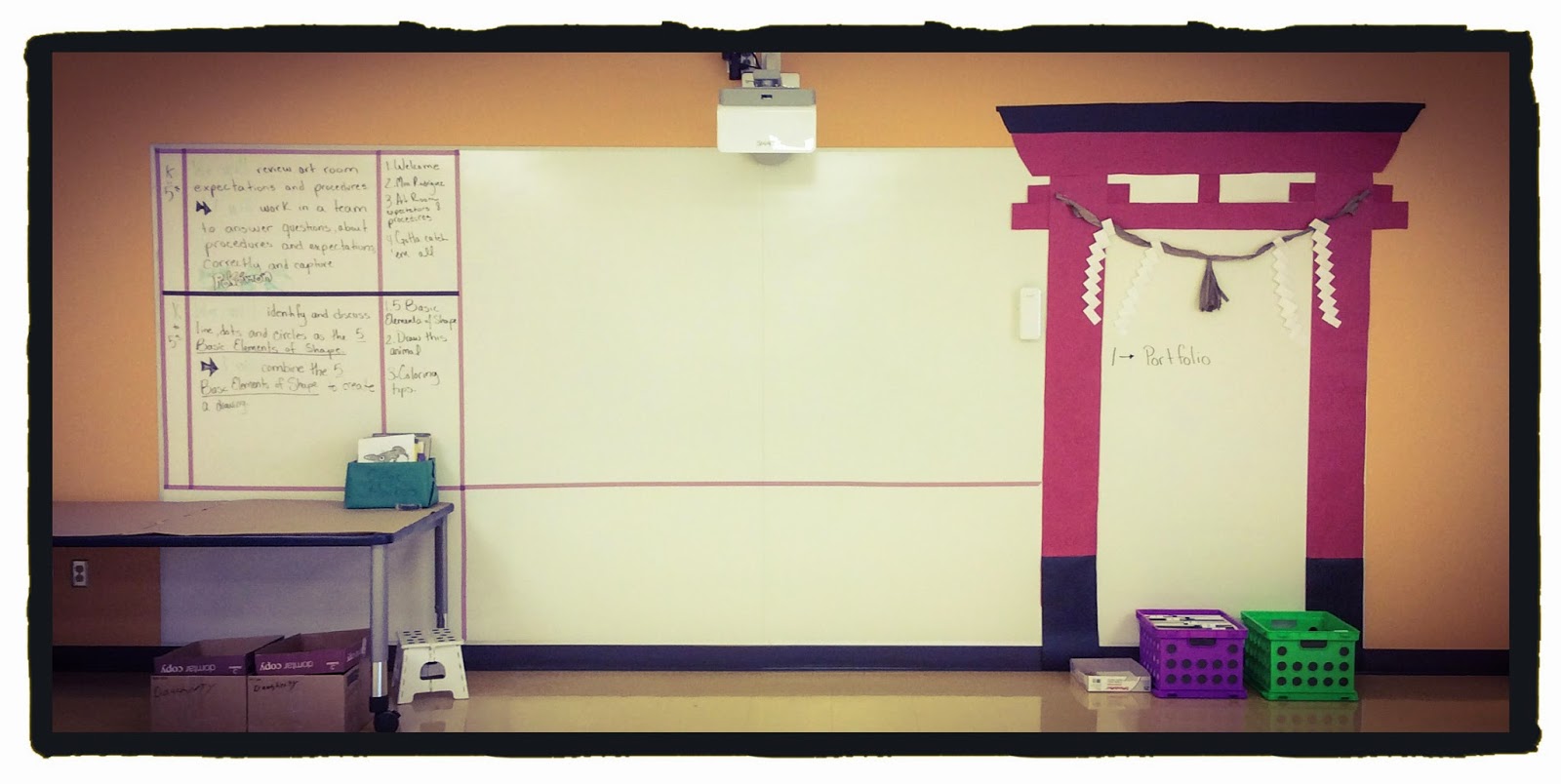 |
| Front of the room |
This year I'm focusing on Asian art so I tried to add elements in my room. On the right side of the board I made a Torii gate out of red and black craft paper. It took me about one hour but it was very easy, this is where the classroom jobs and student helpers are posted. The two baskets below hold the students works in hanging folders for each table and grade. One for Tuesday-Thursday groups, the other for Wednesday-Friday groups.
On the left I made a there column table for the weeks objectives using pattern duck tape (the small kind that's the same size as regular tape). The first column is for the grade level, the second column is for the " we will..." and "I will..." statements, and the last column is for the agenda.
I left room in the center of the board for the projector and marked the space that was left on the bottom to use it later for posing works or other important things I'd like to have in the front.
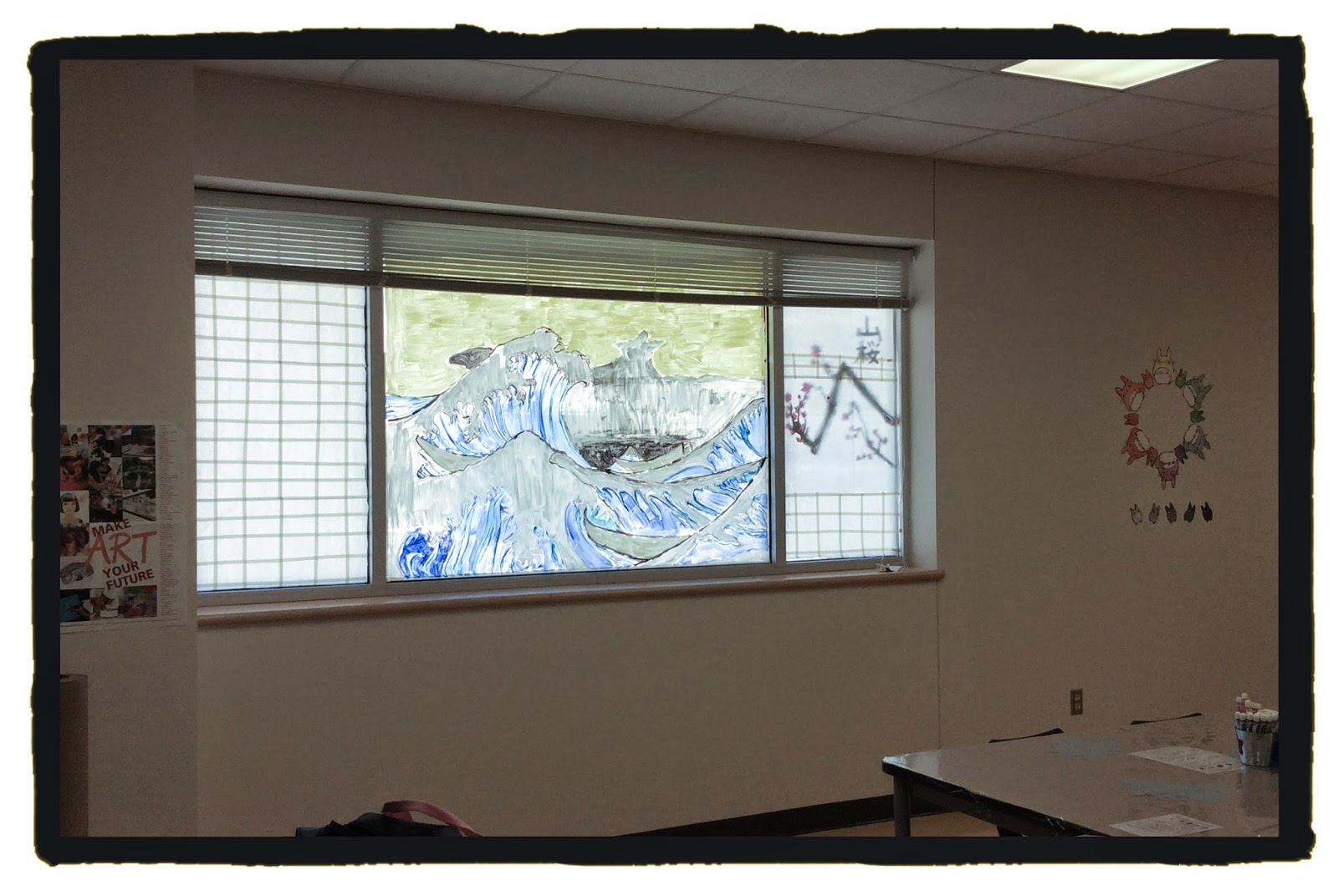 |
| Window painting |
Staying with the Asian theme I painted the Great Wave by Hokusai on the window using a tempera \liquid soap mix. It still needs more details.
On the right I made a color wheel and gray scale with characters from Totoro.
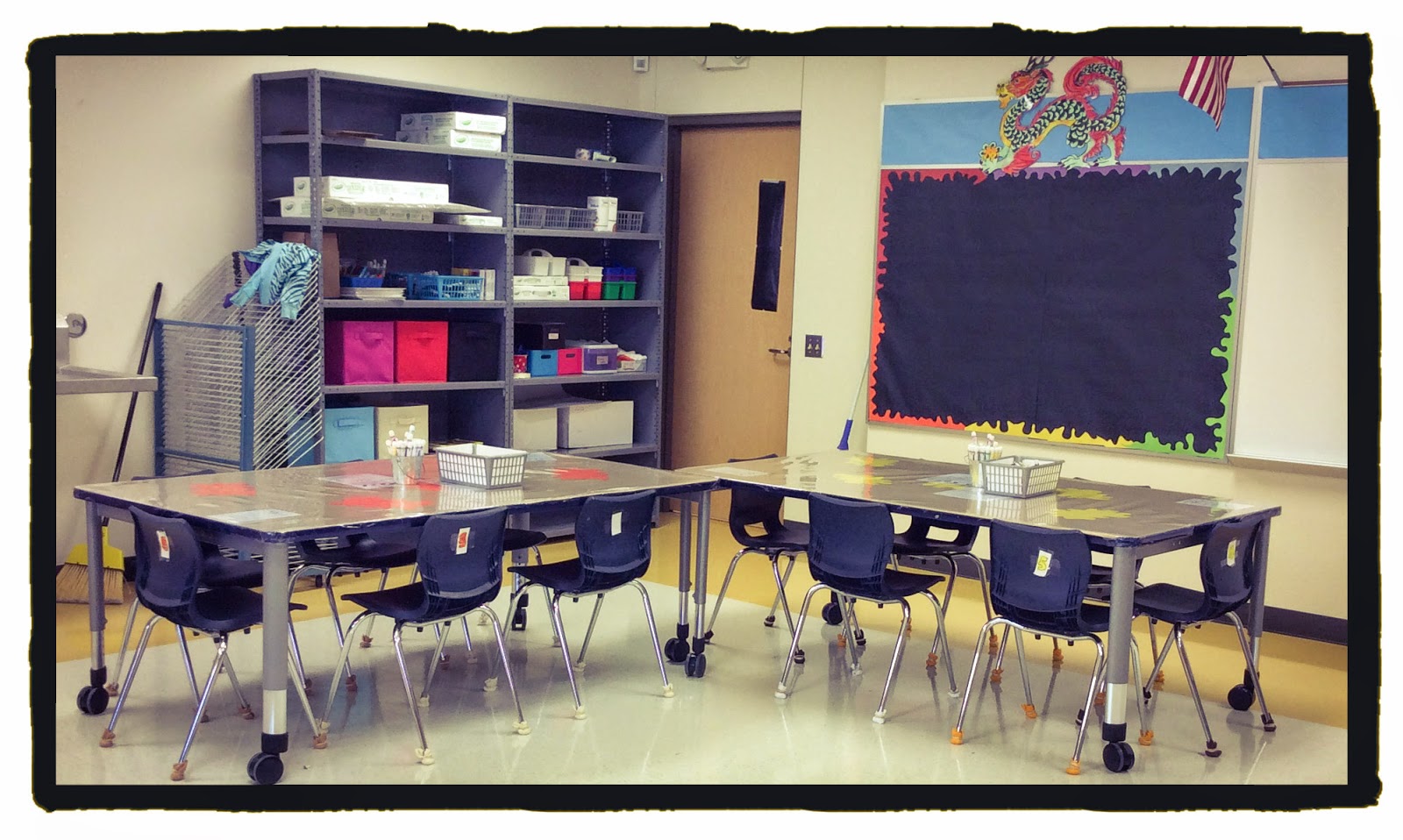 |
| Table organization |
This year I wanted an open space in the center of the room to sit down with the students or use for activities. So I organized the tables in "L" shapes. Each table has a color and each chair has a number from 1-6. I assign helpers based on their number so there always kids responsible for collecting materials for their table.
That's it for now,
happy art teaching!










